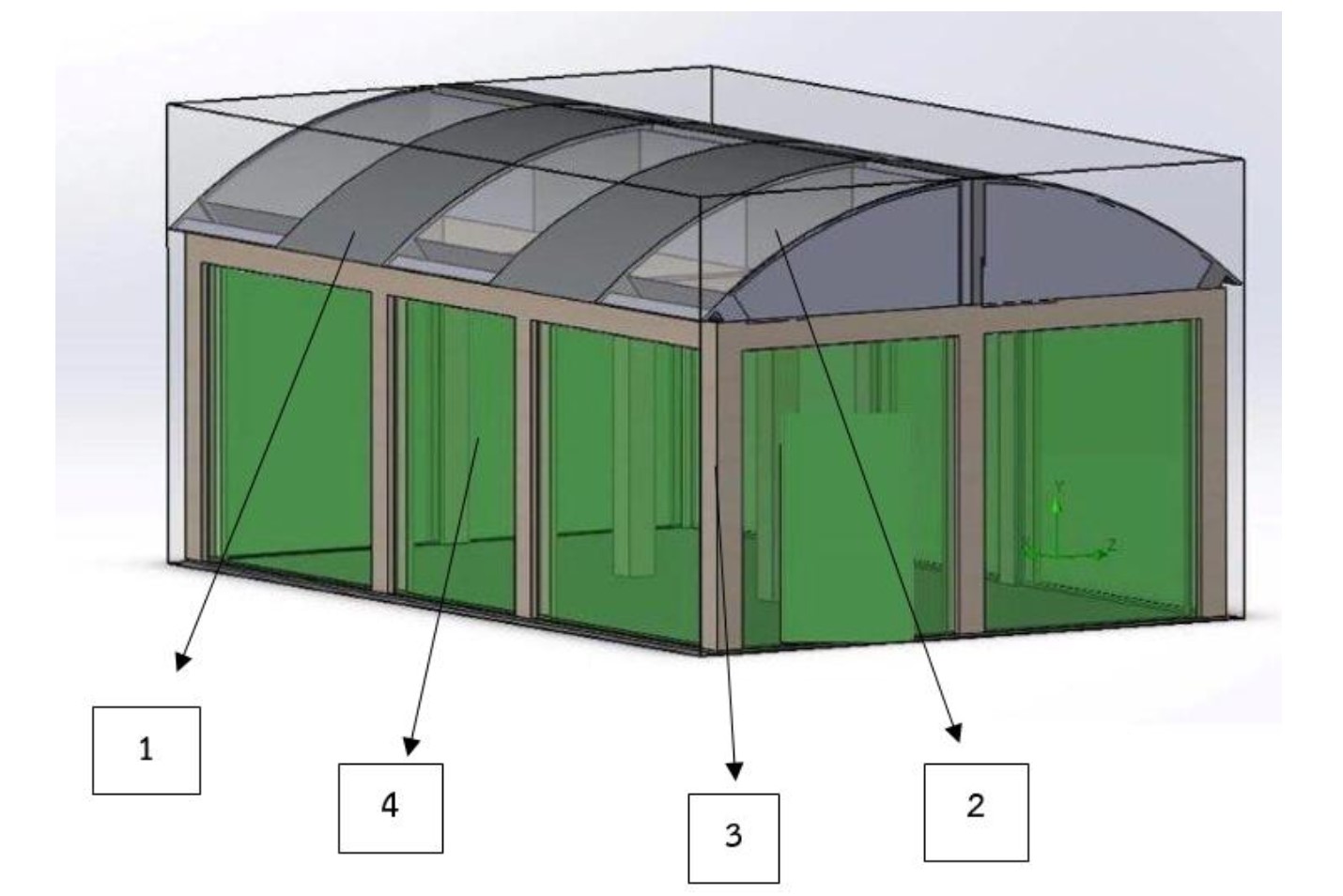Model of a mushroom nursery with suitable for growth using Solid work program
Main Article Content
Abstract
The purpose of this research was to study the air distribution pattern in the mushroom nursery. Design and build a mushroom nursery with suitable temperature for mushroom growth. And compare the temperature obtained from the model with the temperature obtained from the mushroom house from the suitable model. There are 3 models of the model that installed the fan in different positions: 1st Model, model of mushroom nursery without ventilation fan. 2nd Model, model of mushroom nursery with ventilation fan at the gable and 3rd Model, model of the mushroom nursery with the ventilation fan installed in the middle of the mushroom nursery wall. The temperature was measured at 8 locations of the nursery at every 9 a.m. for 10 days. The results of the research showed that the installation of fans in different positions affected the distribution of air inside the mushroom nursery. The 2nd and 3rd models had good distribution of air inside the mushroom nursery. The temperatures shown from 1st , 2nd and 3rd Models were 31.0, 28.4 and 28.5 °C. For this reason, Model 2 has the most suitable distribution of air and temperature for mushroom growth. The Model 2 was used to build a real mushroom nursery, it turned out that the average temperature obtained was 28.4 °C.
Article Details
References
ชินาพัฒน์ สกุลราศรีสวย , ตรี วาทกิจ , ลาภวัต วงศ์ประชา และ อังศุมาลิน สมเทพ. 2561. การเปรียบเทียบ
ประสิทธิภาพระบบควบคุมอุณหภูมิและความชื้นที่เหมาะสมต่อการเจริญเติบโตของเห็ดในโรงเพาะเห็ด
กรณีศึกษา: ฟาร์มเห็ดบ้านเนินสะอาด จังหวัดนครพนม. วารสารวิทยาศาสตร์และเทคโนโลยีสารสนเทศ,
(2): 46-55.
เตชาธร ชัยวงศ์ , กฤตภาส นันติ และ ภคมน ปินตานา. 2561. การพัฒนาต้นแบบโรงเรือนเพาะเห็ดฟางอัจฉริยะ.
วิทยาลัยพลังงานทดแทน มหาวิทยาลัยแม่โจ้, (1): 276-285.
บุญยัง สิงห์เจริญ และ สันติ สาแก้ว. 2554. ระบบควบคุมอุณหภูมิและความชื้นในโรงเรือนเพาะเห็ด. การประชุม
วิชาการระดับชาติมหาวิทยาลัยเทคโนโลยีราชมงคลสุวรรณภูมิครั้งที่ 1: 176-183.
องอาจ วิเศษสุข. 2557. การศึกษารูปแบบการไหลและการกระจายอุณหภูมิอากาศในโรงเรือนเพาะปลูก.
วารสารวิชาการเทคโนโลยีพลังงานและสิ่งแวดล้อม. 1(2): 35-45.
อดิสรณ์ ปรีชา , ศุภัทชัย รุ่งเรือง และ สามารถ ยืนยงพานิช. 2564. โรงเพาะเห็ดระบบอัตโนมัติชุมชนบ้านวังผา
ตำบลแม่จะเรา อำเภอแม่ระมาด จังหวัดตาก. รายงานสืบเนื่องจากการประชุมวิชาการระดับชาติสำหรับ
นักศึกษา มหาวิทยาลัยราชภัฏกำแพงเพชรครั้งที่ 1: 1034 -1041.
Kaiwen, H., Jian, Z., Hai, W. and Qian, J. 2022. Temperature distribution and equipment layout
in a deep chamber: a case study of a coal mine substation. Sustainability 2022. 14(7):
Ionel, O. 2020. A CFD analysis in Solidworks flow simulation for two mixing fluids with different
temperature in nozzles. Journal of Engineering Studies and Research. 26(1): 41-46.
Montero, J.I., Anton, A., Kamaruddin, R.K., and Bailey, B.J., 2001, Analysis of Thermally Driven
Ventilation in Tunnel Greenhouses using Small Scale Models. Journal of Agricultural
Engineering Research. 79(2):213-222.
Rizaldi, T., Raju and Piliang, M P. 2019. Design of filler and compactor for oyster mushroom
growing medium (baglog). IOP Conf. Series: Earth and Environmental Science. 260: 1-7.
Shubham, P. and Ravindra, R. 2021. Thermal Analysis of Heat Sink Using Solidworks. Journal of
Emerging Technologies and Innovative Research. 8(10): 167-175.
Wael, E K., Wenhui, M., Ming, L. and Mohammed, D. 2020. The investigation of energy production
and mushroom yield in greenhouse production based on mono photovoltaic cells effect.
Renewable Energy. 159(2020): 506-518.


